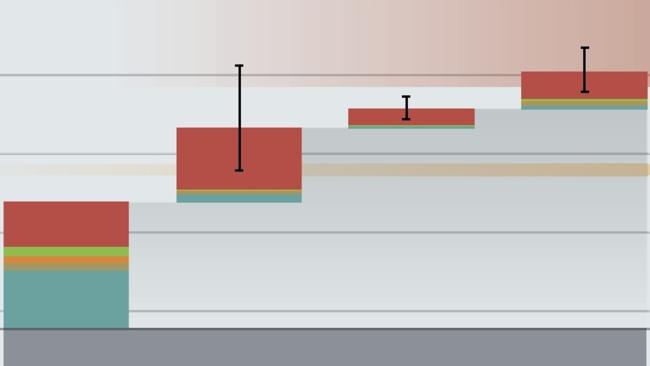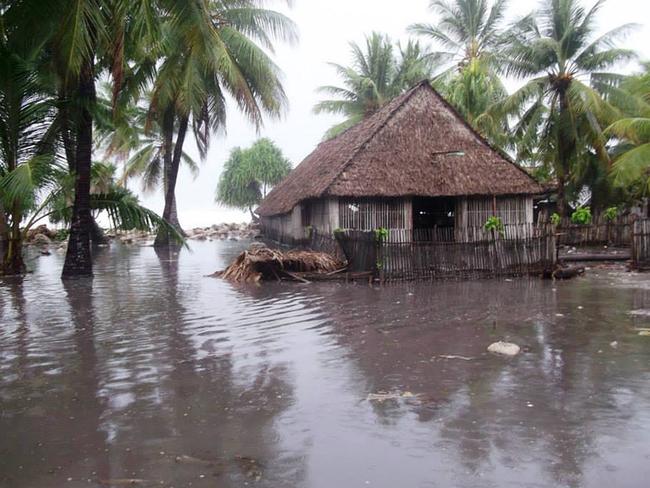The tough choice Australia has to make about coal
A NEW report has highlighted why Australia needs to change but is this precarious outlook enough to make the country alter its course?

A NEW report has highlighted the bleak future of coal in Australia and around the world but also points out why it’s so hard to give up.
The latest United Nation’s Emissions Gap Report 2017 sets out the importance of preventing further investment in coal if global temperatures are to be kept below the target of 2C.
Greenhouse gas emissions are already on track to be about 30 per cent above levels needed to keep global warming below the target.
If this is not addressed, global temperatures are likely to rise by up to 3.2C by 2100.
While Australia is likely to meet its 2020 target, it’s not on track to achieve its 2030 target, which aims to reduce 2005 emissions by 26-28 per cent.
The report noted that Australia was one of the countries likely to need further action in order the meet the 2030 target.
The transition away from coal has been controversial in Australia as seen in the opposition to Adani's Carmichael mine, which many, including state and federal governments, support for the jobs it is expected to bring.
But others oppose the potential use of taxpayer funds to support a mine that may be financially unviable and bad for climate change.
The Northern Australia Infrastructure Facility is currently considering whether to grant Adani a $1 billion taxpayer-funded loan to build a railway line for its mine.
The Australian Conservation Foundation is also concerned Australia’s export credit agency Export Finance and Insurance Corporation (EFIC) may guarantee loans for the mine that could see taxpayers money used to pay foreign banks if the mine failed.
But the UN report says subsidies for coal should be phased out to encourage a faster transition away from the resource.
Even Pacific Islanders are now calling on Australia not to fund Adani’s mine.
“We talk about the Adani coalmine,” Eri Aram, a 28-year-old father of three from Kiribati, told The Guardian. “I think it’s not a good idea — it makes the world worse for all of us. It is inconsiderate of other humans on this planet.
“We didn’t think of Australia as a country that would do that. We looked at it as our bigger brother. Proceeding with that new mine is a sad move. We live together in the environment but it’s like they are ignoring us.”

The UN said Monday the amount of carbon dioxide in the atmosphere grew at record rate in 2016, to a level not seen for millions of years and will potentially fuel a 20m rise in sea levels.
To keep temperatures under 2C the UN report noted it was important that no new coal-fired power plants be built. It has also suggested about 80-90 per cent of coal reserves remain in the ground.
Contributor to the UN report, Professor Frank Jotzo of the Australian National University’s Crawford School, said it described a precarious outlook for new coal investments.
“Whoever is faced with the decision of sinking major money into fixed infrastructure for coal mining or transport, will need to think very hard about whether it is a profitable proposition,” Prof Jotzo told news.com.au.
When asked whether the Australian Government should approve the $1 billion loan for Adani, Prof Jotzo said government considerations could be very different to private institutions.
“They do not own the assets that may turn out to be stranded,” he said.
“So there is a temptation to support projects and short term investments like rail etc, predicated on the expectation of tax income and royalty income for many decades.
“But if there is a situation where the coal mine stops operation, the state and government will be missing out on revenue, and that needs to be taken into consideration.”
In general though, Prof Jotzo said he did not think the investment was a good idea.
“As a matter of principle there is no justification for subsidies for any fossil fuel project.”
“There are clearly negative effects to society from pollution and climate change down the track.”
WHO IS BUILDING NEW POWER STATIONS?
The United Nations said phasing out coal consumption in the power sector would be necessary to meet international targets if carbon capture technology is not implemented.
Yet coal-fired power stations continue to be built around the world.
Coal remains an attractive investment because it is a cheap source of energy and provides energy security.
In early 2017, an extra 273 GW of coal-fired capacity was being built and 570 GW was in pre-construction.
The new projects are mainly focused in 10 countries, which are building about 85 per cent of the extra capacity. They include China, India, Turkey, Indonesia, Vietnam, Japan, Egypt, Bangladesh, Pakistan and the Republic of Korea.

Others that have announced new investments include Indonesia, Japan, Egypt, Bangladesh and Pakistan.
But it’s not all bad news. China and India have both shelved or cancelled new projects in 2016 that will see a reduction in extra capacity of 54 per cent and 52 per cent respectively, compared to 2015.
The slowdown of China and India is significant because together the two countries accounted for 86 per cent of all new capacity between 2006 and 2016.
Both countries also expect domestic demand for new coal power to slow because of overcapacity in China and a downturn in solar prices in India.
Prof Jotzo said building small to medium scale solar in India was now cheaper in many cases than building large-scale coal.
While the UN report suggested no new coal-fired power plants be built, Prof Jotzo said the scenario was extreme as it assessed the impact of all existing power plants as well as those in the investment pipeline.
“If they all run to the end of their life then this will be completely incompatible with climate conditions but the report suggests this won’t happen — they won’t be run to the end of their lives and not all the plants will be built,” he said.
AUSTRALIA MAY ALSO GET IN ON THE ACT
While there are currently no plans for new coal-fired power stations in Australia, there have been growing suggestions this should be considered.
The National Energy Guarantee currently under consideration would likely enable new coal-fired power stations to be built.
“It’s very possible under this scheme, because for once now coal will not be penalised,” Treasurer Scott Morrison told Sky News last month.
Today The Australian revealed a leaked report found a proposed new “ultra-supercritical’ power station in north Queensland would be profitable.
But Labor Premier Annastacia Palaszczuk said Queensland did not need a new coal-fired power station.
“It would take seven years to build a new coal-fired power station, we already have a young energy fleet of coal fired power stations here, providing not just Queensland with the energy needs they need but exporting down to other states,” Ms Palaszczuk said.
“No it’s not viable, the report is very clear. It says a new coal fired power station would keep electricity bills high for 40 years, that’s what the report says. It’s in black and white.”
Prof Jotzo said if Australia wanted to meet its 2030 targets, it needed to change where it got its electricity from.
“The electricity sector is really the key for Australia’s emissions reduction,” he said.
“The outlook is a very positive one because renewable energy is becoming so easily available and so cheap.”
But he said the industry needed clear direction from the government about its policy, ideally supported by the opposition, so there was confidence things wouldn’t fundamentally shift if there was a change in government.
CAN WE CHANGE?
In order to achieve a faster transition away from coal, the report suggested phasing out subsidies and pricing in the negative side effects of coal.
If you include the estimated damage to society from air pollution, it’s estimated the global subsidy to coal was $US2,400 billion and rises to $US3,100 billion if damage to the climate is included.
Phasing out coal will improve air quality and increase water availability but the report acknowledged that moving away from coal can be politically difficult.
It noted that governments which tried to get rid of subsidies without taking into account the political impacts have often failed.
Transition away from coal often leaves workers and communities to bear the brunt of job losses and these impacts need to be addressed.
“We shouldn’t pretend this is not a challenge,” Prof Jotzo said. “But we have gone through previous shifts, including the shift away from the clothing and footwear industry, and the shift away from the car industry in Australia.
“It’s always the case in Australia that other jobs, other investments, take the place of the old.”
— With Reuters



